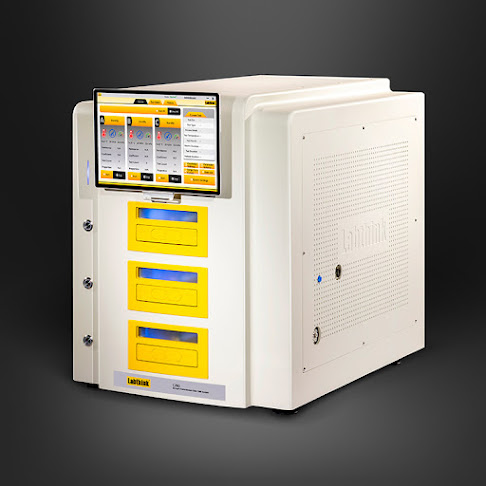Packaging plays a crucial role in maintaining product quality and shelf life. Oxygen permeability is a key indicator of a material's barrier properties. Labthink, a leader in packaging testing equipment, has launched the C203 Oxygen Permeation Testing Instrument.
The C203 boasts enhanced professionalism, efficiency, and intelligence. Its high-precision transmitter and Labthink's core control technology ensure accurate testing across a wide range. The instrument incorporates Labthink's new-generation, three-cell design, improving test resolution, repeatability, and temperature/humidity control.
C203H Oxygen Transmission Rate Test System is based on Coulometric oxygen analysis sensor and equal pressure test method, and is conforming to ASTM D 3985 and other standards. It provides high-precision and high-efficiency oxygen permeability tests for high and medium gas barrier materials. It is suitable for testing the oxygen permeability of thin films, sheets and related materials in the fields of food, medicine, medical devices, daily chemical, photovoltaic, electronic and other fields.
Labthink's latest operating software empowers the C203 with intelligent data processing, secure data storage, and strict user management via Labthink's DataShield. To cater to diverse needs, a six-cell model C206 is also available. Visit the product page for detailed information.
As the demand for functional packaging materials grows, testing methods are evolving to ensure a more comprehensive evaluation of packaging films. Labthink encourages collaboration with packaging industry companies for quality control! Visit the website www.labthink.com to learn more!
The C203 boasts enhanced professionalism, efficiency, and intelligence. Its high-precision transmitter and Labthink's core control technology ensure accurate testing across a wide range. The instrument incorporates Labthink's new-generation, three-cell design, improving test resolution, repeatability, and temperature/humidity control.
C203H Oxygen Transmission Rate Test System is based on Coulometric oxygen analysis sensor and equal pressure test method, and is conforming to ASTM D 3985 and other standards. It provides high-precision and high-efficiency oxygen permeability tests for high and medium gas barrier materials. It is suitable for testing the oxygen permeability of thin films, sheets and related materials in the fields of food, medicine, medical devices, daily chemical, photovoltaic, electronic and other fields.
Labthink's latest operating software empowers the C203 with intelligent data processing, secure data storage, and strict user management via Labthink's DataShield. To cater to diverse needs, a six-cell model C206 is also available. Visit the product page for detailed information.
As the demand for functional packaging materials grows, testing methods are evolving to ensure a more comprehensive evaluation of packaging films. Labthink encourages collaboration with packaging industry companies for quality control! Visit the website www.labthink.com to learn more!

Comments
Post a Comment